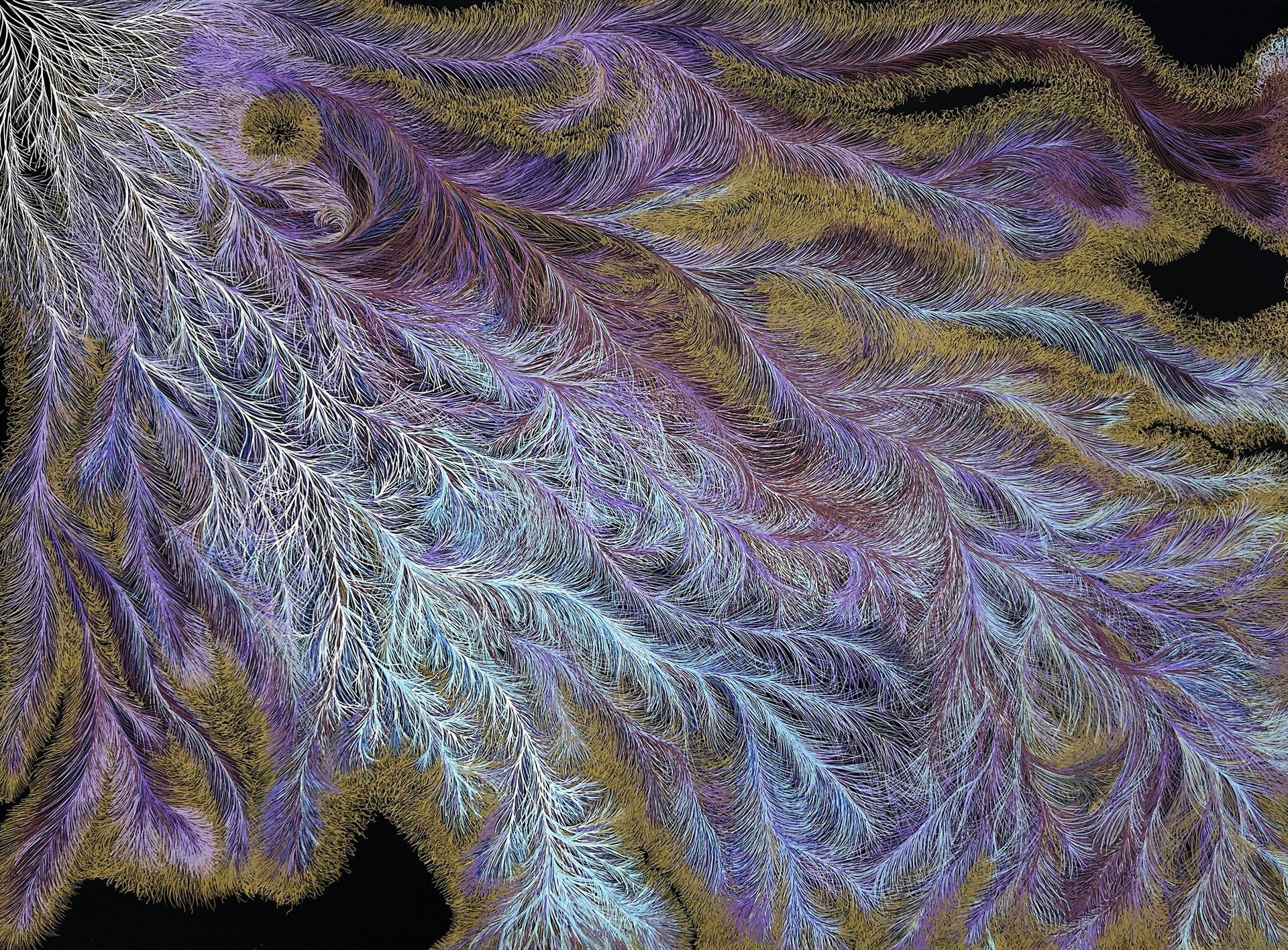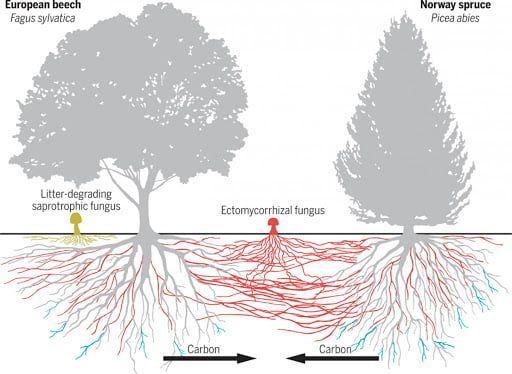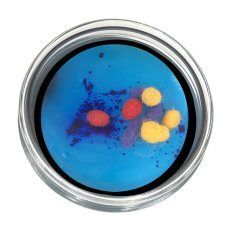Isolated Culture 26
Identify the culture
3 Bacillus flexus (purple rod shape)
4 Acinetobacter calcoaceticus (orange ball shape)
2 Kocuria rosea (red ball shape)
Culture base is photogram of ice

Microbiology is the study of living things that cannot be seen with the naked eye. The term microbe is decidedly human, as they are microscopic to our size. For Sarah Hearn, an artist, researcher and teacher in Norman, Oklahoma, the world of living things we cannot perceive without aids is a source of curiosity and inspiration.
A bevy of information can be gleaned from the microbes Hearn highlights. For instance, The nine large mycelium network pieces on the gallery’s north wall give a sense of the scale of the fungus. Made famous by the popular video game and HBO series
The Last of Us, mycelium can spread over thousands of acres. Their real life impact is benevolent rather than maleficent, however. Microscopic hairs in mycelium attach to root structures in plants. This connection, a mutually beneficial relationship in most circumstances, aides in the transfer of nutrients and even communication between plants.

Fungi are not the only microbe Hearn explores.
Microbial Multiverse also displays the fascinating qualities of single-celled organisms through Hearn’s multimedia works and watercolors. To bring these microbes to a size that can be appreciated, the multidisciplinary artist uses felt, sourced images, and authentic scientific glassware. Hearn is quick to point out these works contain her own microbiome, known in the field as normal flora, since the pieces required lots of hands on involvement. These
Isolated Culture works are imagined interactions but backed by accurate science.

Isolated Culture 26
Identify the culture
3 Bacillus flexus (purple rod shape)
4 Acinetobacter calcoaceticus (orange ball shape)
2 Kocuria rosea (red ball shape)
Culture base is photogram of ice
Hearn’s work is rooted in two separate camps: “one grounded in studies of life on planet earth, and another hovering in a hazy atmosphere of science fiction.” Taking artistic liberties at times, Hearn engages viewers into a whole new world. Hearn’s works are just the launching point for further exploration into microbiology, which has a myriad of fascinating instances, such as extremophiles.
Join us on Saturday, February 3rd for an opening reception of
Microbial Multiverse from 1-4pm. Hearn will be present and will give remarks at 2pm. Free admission. Light refreshments served.

with support from

NEWS | CONTACT US | SUBSCRIBE
All Rights Reserved | Volland Foundation, Inc. | Privacy Policy